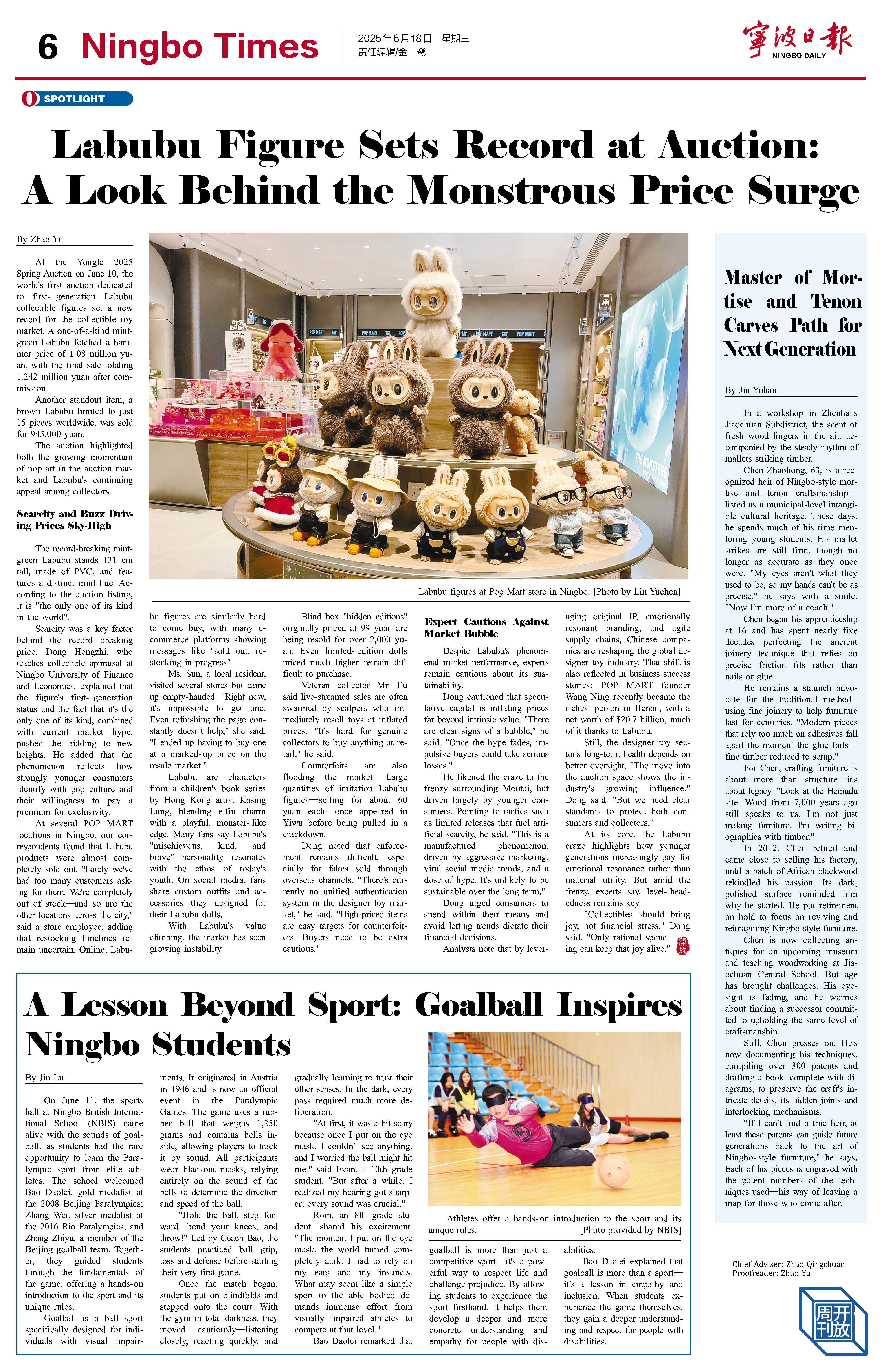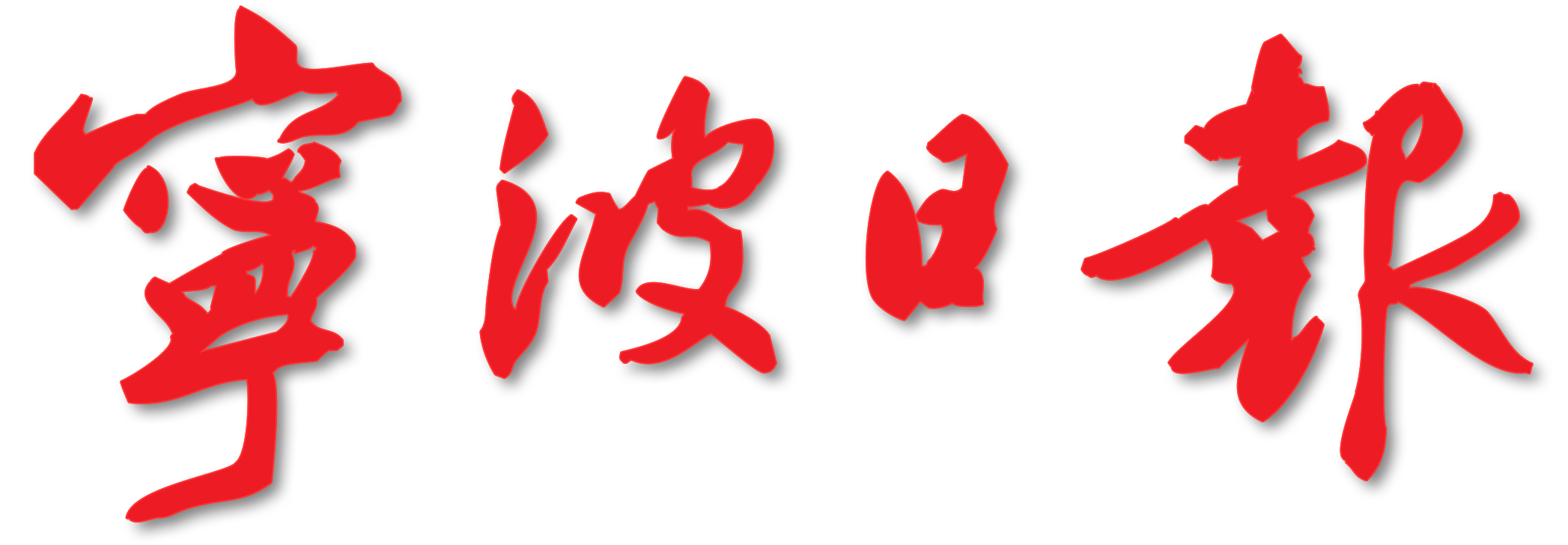By Zhao Yu
At the Yongle 2025 Spring Auction on June 10, the world's first auction dedicated to first-generation Labubu collectible figures set a new record for the collectible toy market. A one-of-a-kind mint-green Labubu fetched a hammer price of 1.08 million yuan, with the final sale totaling 1.242 million yuan after commission.
Another standout item, a brown Labubu limited to just 15 pieces worldwide, was sold for 943,000 yuan.
The auction highlighted both the growing momentum of pop art in the auction market and Labubu's continuing appeal among collectors.
Scarcity and Buzz Driving Prices Sky-High
The record-breaking mint-green Labubu stands 131 cm tall, made of PVC, and features a distinct mint hue. According to the auction listing, it is "the only one of its kind in the world".
Scarcity was a key factor behind the record-breaking price. Dong Hengzhi, who teaches collectible appraisal at Ningbo University of Finance and Economics, explained that the figure's first-generation status and the fact that it's the only one of its kind, combined with current market hype, pushed the bidding to new heights. He added that the phenomenon reflects how strongly younger consumers identify with pop culture and their willingness to pay a premium for exclusivity.
At several POP MART locations in Ningbo, our correspondents found that Labubu products were almost completely sold out. "Lately we've had too many customers asking for them. We're completely out of stock—and so are the other locations across the city," said a store employee, adding that restocking timelines remain uncertain. Online, Labubu figures are similarly hard to come buy, with many e-commerce platforms showing messages like "sold out, restocking in progress".
Ms. Sun, a local resident, visited several stores but came up empty-handed. "Right now, it's impossible to get one. Even refreshing the page constantly doesn't help," she said. "I ended up having to buy one at a marked-up price on the resale market."
Labubu are characters from a children's book series by Hong Kong artist Kasing Lung, blending elfin charm with a playful, monster-like edge. Many fans say Labubu's "mischievous, kind, and brave" personality resonates with the ethos of today's youth. On social media, fans share custom outfits and accessories they designed for their Labubu dolls.
With Labubu's value climbing, the market has seen growing instability.
Blind box "hidden editions" originally priced at 99 yuan are being resold for over 2,000 yuan. Even limited-edition dolls priced much higher remain difficult to purchase.
Veteran collector Mr. Fu said live-streamed sales are often swarmed by scalpers who immediately resell toys at inflated prices. "It's hard for genuine collectors to buy anything at retail," he said.
Counterfeits are also flooding the market. Large quantities of imitation Labubu figures—selling for about 60 yuan each—once appeared in Yiwu before being pulled in a crackdown.
Dong noted that enforcement remains difficult, especially for fakes sold through overseas channels. "There's currently no unified authentication system in the designer toy market," he said. "High-priced items are easy targets for counterfeiters. Buyers need to be extra cautious."
Expert Cautions Against Market Bubble
Despite Labubu's phenomenal market performance, experts remain cautious about its sustainability.
Dong cautioned that speculative capital is inflating prices far beyond intrinsic value. "There are clear signs of a bubble," he said. "Once the hype fades, impulsive buyers could take serious losses."
He likened the craze to the frenzy surrounding Moutai, but driven largely by younger consumers. Pointing to tactics such as limited releases that fuel artificial scarcity, he said, "This is a manufactured phenomenon, driven by aggressive marketing, viral social media trends, and a dose of hype. It's unlikely to be sustainable over the long term."
Dong urged consumers to spend within their means and avoid letting trends dictate their financial decisions.
Analysts note that by leveraging original IP, emotionally resonant branding, and agile supply chains, Chinese companies are reshaping the global designer toy industry. That shift is also reflected in business success stories: POP MART founder Wang Ning recently became the richest person in Henan, with a net worth of $20.7 billion, much of it thanks to Labubu.
Still, the designer toy sector's long-term health depends on better oversight. "The move into the auction space shows the industry's growing influence," Dong said. "But we need clear standards to protect both consumers and collectors."
At its core, the Labubu craze highlights how younger generations increasingly pay for emotional resonance rather than material utility. But amid the frenzy, experts say, level-headedness remains key.
"Collectibles should bring joy, not financial stress," Dong said. "Only rational spending can keep that joy alive."



